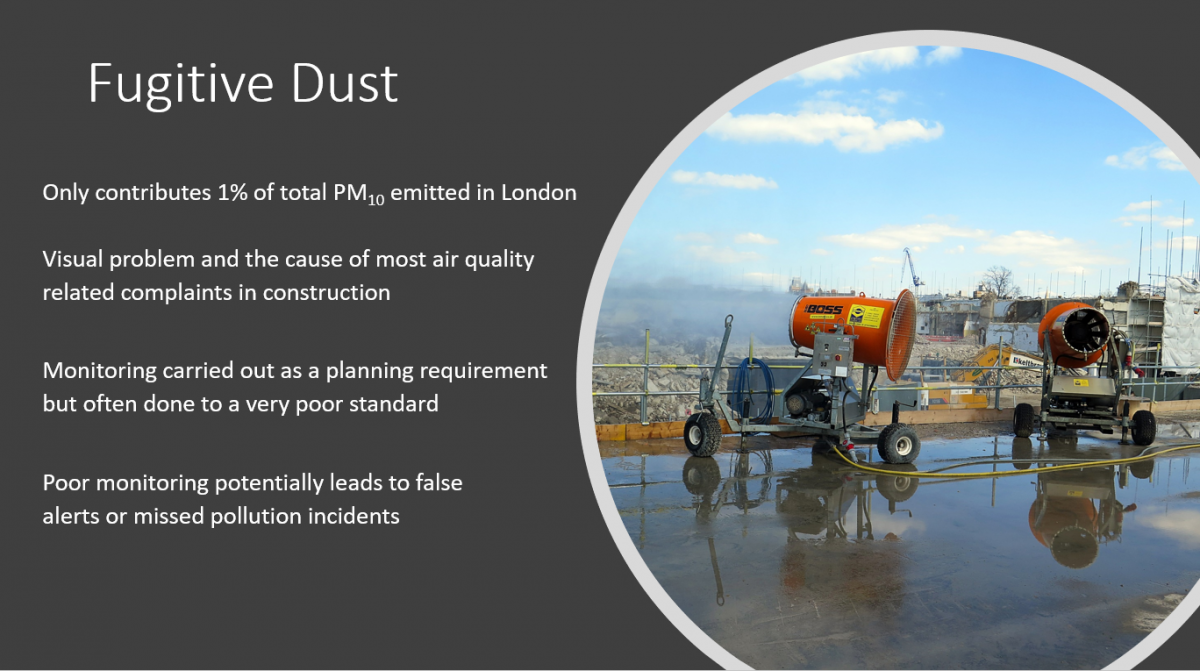If the required level of mitigation from the Dust Management Plan (DMP) is implemented correctly, then formation of dust and harmful emissions from construction sites should be minimised, however all local authorities in London have declared air quality management areas (AQMA's) that cover their entire borough and any construction and demolition activities carried out without effective control of dust and emissions can result in an increase of poor air quality.
On all major development sites should have continous air pollution monitoring carried out, along with noise and vibration. It is essential to monitor for dust generation, including PM10 , and in the event that higher concentrations are recorded on these monitors the cause is investigated and remedial actions should be taken immediately, as well as the event being recorded in the onsite dust logbook. Smaller sites may only be required to carry out a simple visual assessment during certain activities.

The need to monitor for PM2.5 and NO2 will be determined on a case by case basis by the local planning authority. The level of monitoring required will generally depend on the existing air quality in the area, air pollution risks from the development, the technical practicalities and financial implications of such monitoring.
In London construction and demolition activities could result in even poorer air quality within an existing air quality management area (AQMA).